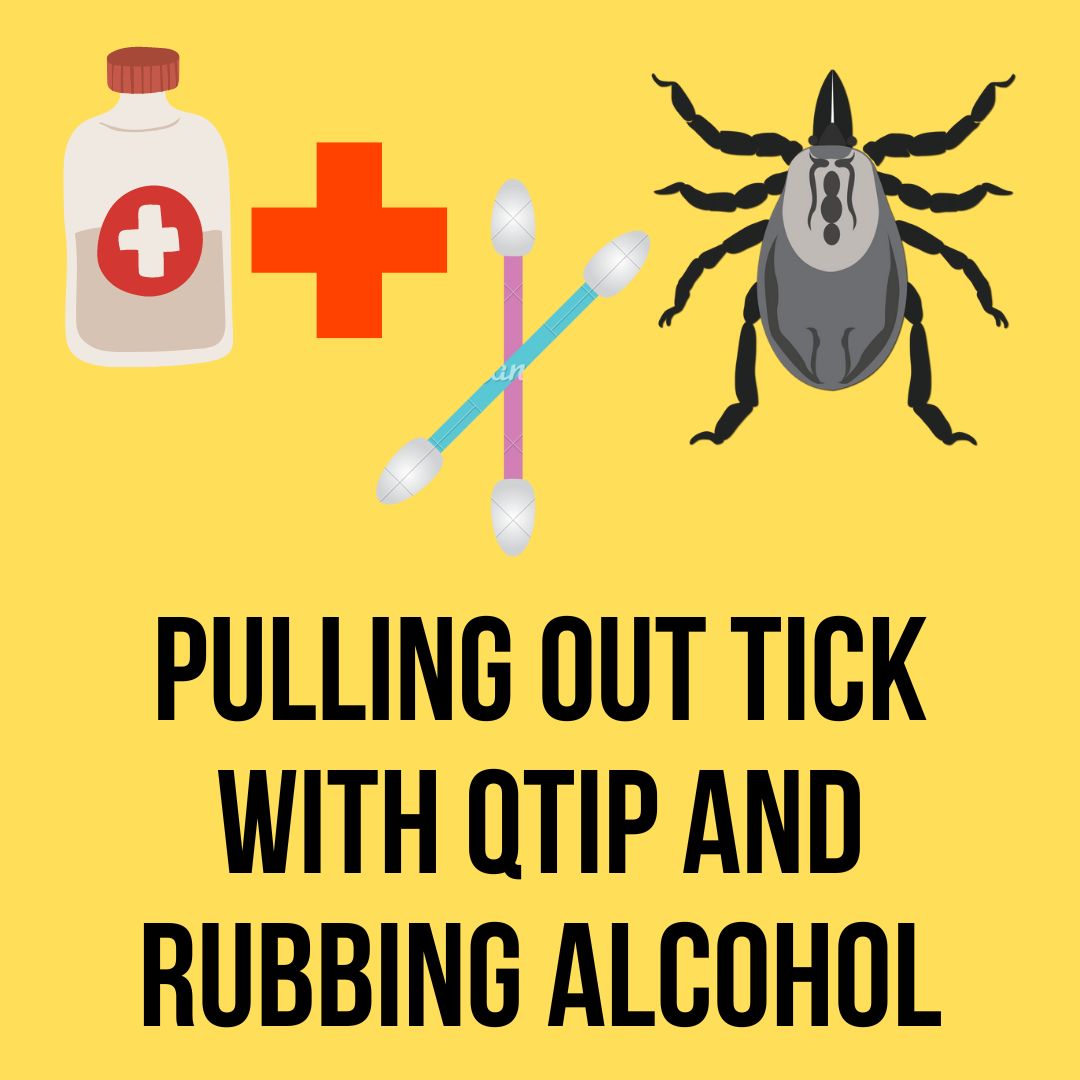
Safely Removing a Tick with a Q-tip and Rubbing Alcohol: A Step-by-Step Guide
Ticks are common outdoor pests that can transmit diseases if not removed promptly and properly. One method for safe tick removal involves using a Q-tip and rubbing alcohol. In this article, we will guide you through the steps of safely pulling out a tick, the benefits of using rubbing alcohol, and precautions to take during the process.
Understanding Ticks: Ticks are small arachnids that feed on the blood of mammals, including humans. Some ticks carry pathogens that can cause diseases such as Lyme disease. Prompt and careful removal is crucial to reduce the risk of disease transmission.
Materials Needed:
Before you start, gather the following materials:
- Q-tip
- Rubbing alcohol (isopropyl alcohol)
- Fine-tipped tweezers
- Small container for disposal
- Antiseptic ointment
Step-by-Step Guide:
1. Prepare the Area:
- Ensure you have good lighting and a clean, well-lit area to work in. Wash your hands thoroughly with soap and water.
2. Gather Materials:
- Have all the necessary materials within reach. This includes the Q-tip, rubbing alcohol, fine-tipped tweezers, a small container for tick disposal, and antiseptic ointment.
3. Use Fine-Tipped Tweezers:
- Grasp the tick as close to the skin’s surface as possible using fine-tipped tweezers. Avoid squeezing the tick’s body.
4. Steady and Firm Grip:
- Hold the tweezers parallel to the skin’s surface and pull upward with a steady, firm grip. Ensure you do not twist or jerk the tick, as this may cause the mouthparts to break off and remain in the skin.
5. Use Q-tip and Rubbing Alcohol:
- After removing the tick, take a Q-tip and soak it in rubbing alcohol. Gently clean the bite area with the alcohol-soaked Q-tip. This helps disinfect the area and may assist in detaching any remaining mouthparts.
6. Dispose of the Tick:
- Place the tick in a small container filled with rubbing alcohol. Tightly seal the container and dispose of it properly. Do not crush the tick with your fingers.
7. Clean the Bite Area:
- Clean the bite area on your skin with antiseptic ointment. Monitor the area for any signs of infection, and consult a healthcare professional if needed.
Benefits of Using Rubbing Alcohol:
Rubbing alcohol offers several benefits during the tick removal process:
- Disinfection: Rubbing alcohol helps disinfect the bite area, reducing the risk of infection.
- Assistance in Detachment: The alcohol may assist in detaching any remaining mouthparts left by the tick.
- Convenience: Rubbing alcohol is readily available and easy to use in the removal process.
Precautions:
- Avoid Folk Remedies: Stick to proven methods like using fine-tipped tweezers and rubbing alcohol. Folk remedies like applying heat or petroleum jelly may increase the risk of tick-borne diseases.
- Seek Medical Attention: If you have difficulty removing the tick, experience signs of infection, or develop symptoms like fever or rash, seek medical attention promptly.
Proper Tick Removal Procedure:
- Use fine-tipped tweezers to grasp the tick close to the skin’s surface.
- Pull upward with a steady, firm motion. Avoid twisting or jerking, as this may cause the mouthparts to break off.
- After removal, clean the bite area by rubbing alcohol to disinfect it.
Precautions:
- Do not use substances like petroleum jelly, nail polish, or heat to attempt to make a tick detach. These methods are not recommended and may lead to increased risk of disease transmission.
- If you are unable to remove the tick or experience signs of infection, consult a healthcare professional.
Related FAQ’S
1. Will Rubbing Alcohol Make a Tick Come Out?
- No, rubbing alcohol does not make a tick come out. Ticks firmly attach themselves to the skin using specialized mouthparts, and simply applying rubbing alcohol won’t cause them to release their hold.
2. What Happens When You Put Rubbing Alcohol on a Tick?
- When rubbing alcohol is applied to a tick, it may have some impact on the tick, such as disinfecting the area. However, the primary goal of using rubbing alcohol in tick removal is to clean the bite site after the tick has been safely removed.
3. Will Rubbing Alcohol Make a Tick Back Out?
- No, rubbing alcohol will not make a tick back out. The proper method for tick removal involves using fine-tipped tweezers to grasp the tick as close to the skin’s surface as possible and pulling upward with a steady, firm motion. The use of rubbing alcohol after removal is to disinfect the area.
Conclusion:
Safely removing a tick with a Q-tip and rubbing alcohol is a straightforward process that, when done correctly, helps minimize the risk of disease transmission. Always be cautious when dealing with ticks, follow proper procedures, and seek medical advice if needed. With the right approach, you can effectively protect yourself from tick-borne illnesses.

My name is Logan, and I’m a 36-year-old dad who owns a small pressure-washing company in the suburbs of Atlanta, Georgia. My main goal with rubbing-alcohol.com is to show you how versatile isopropyl rubbing alcohol can be! I hope. You find it useful.
